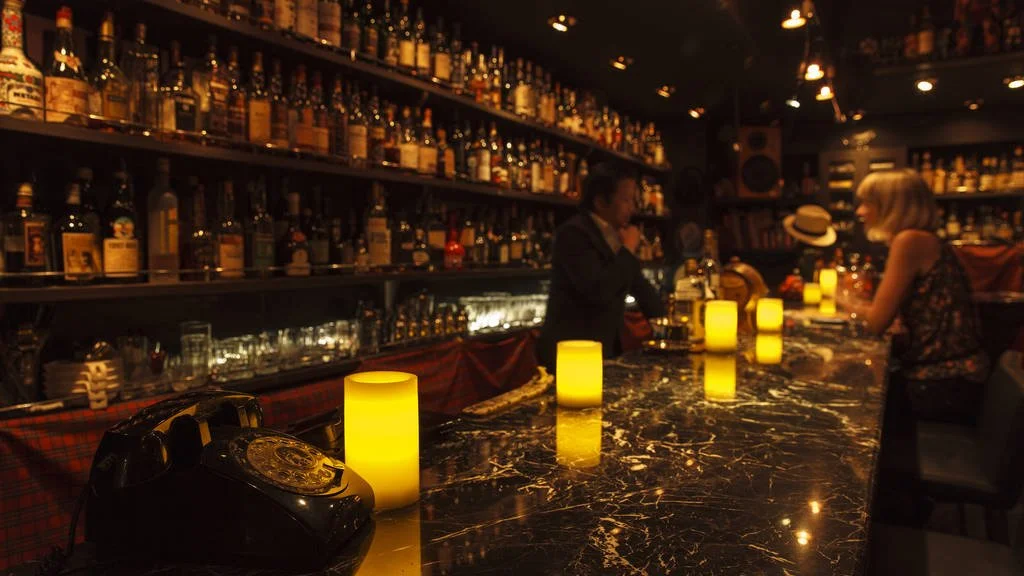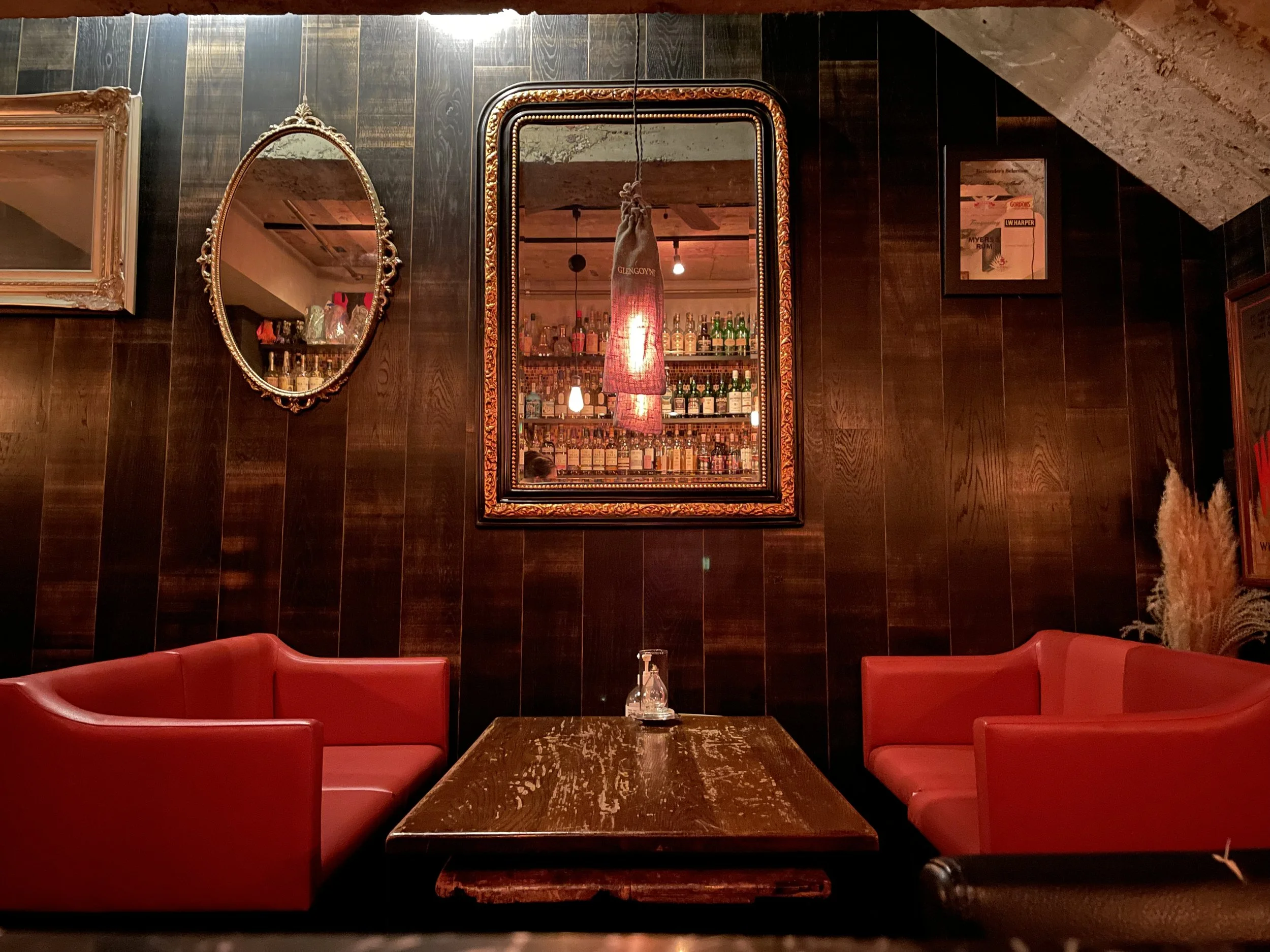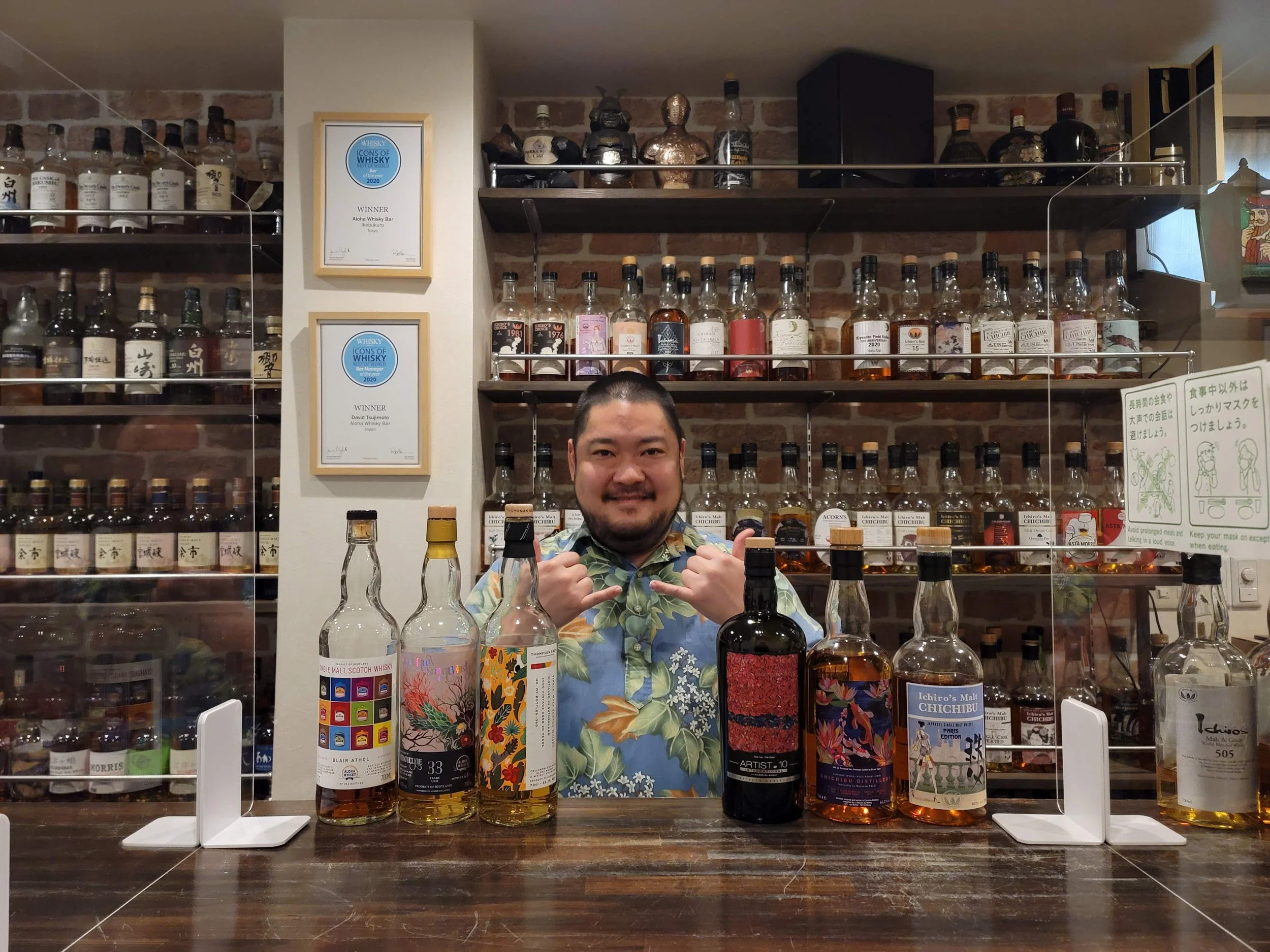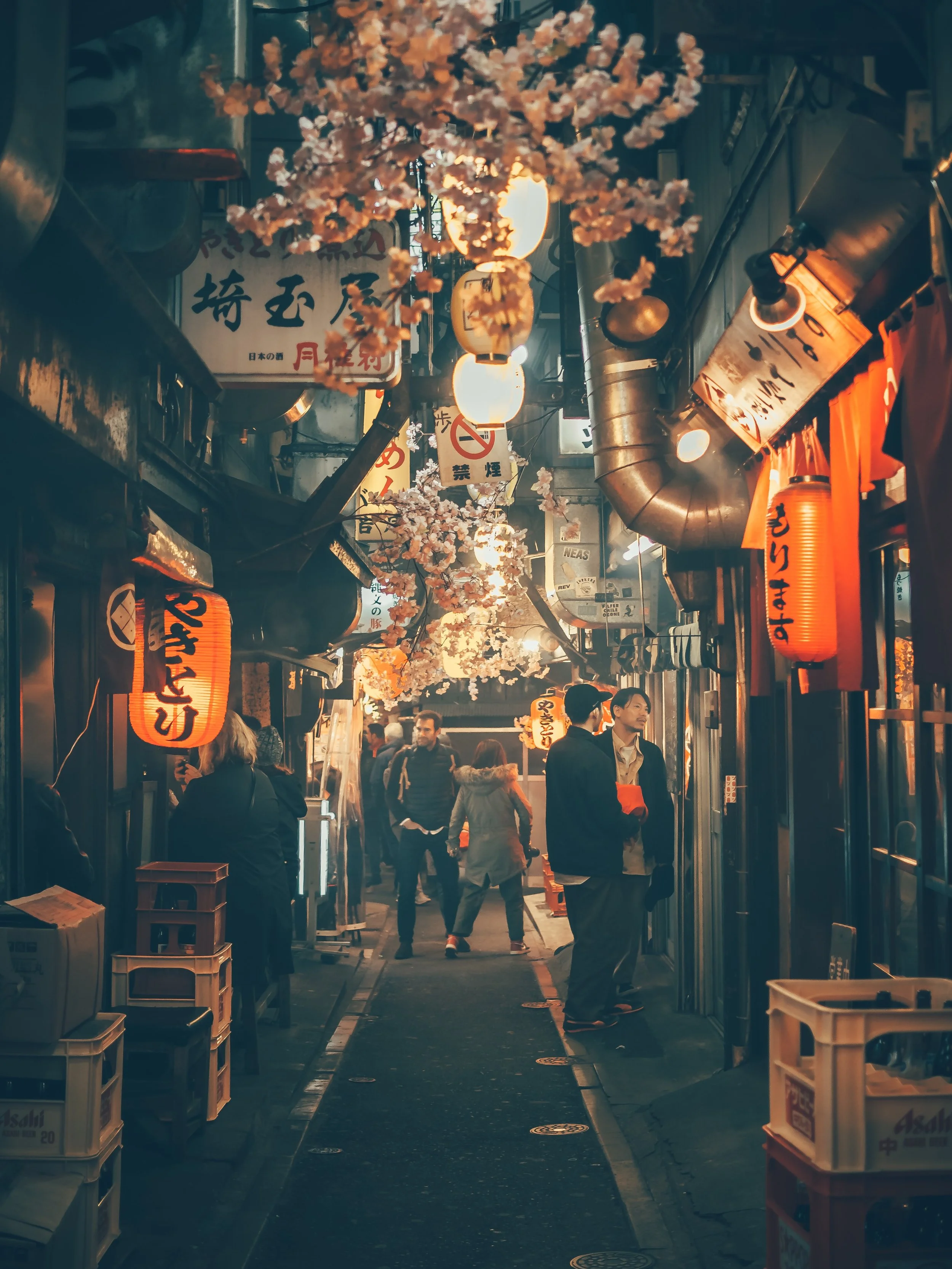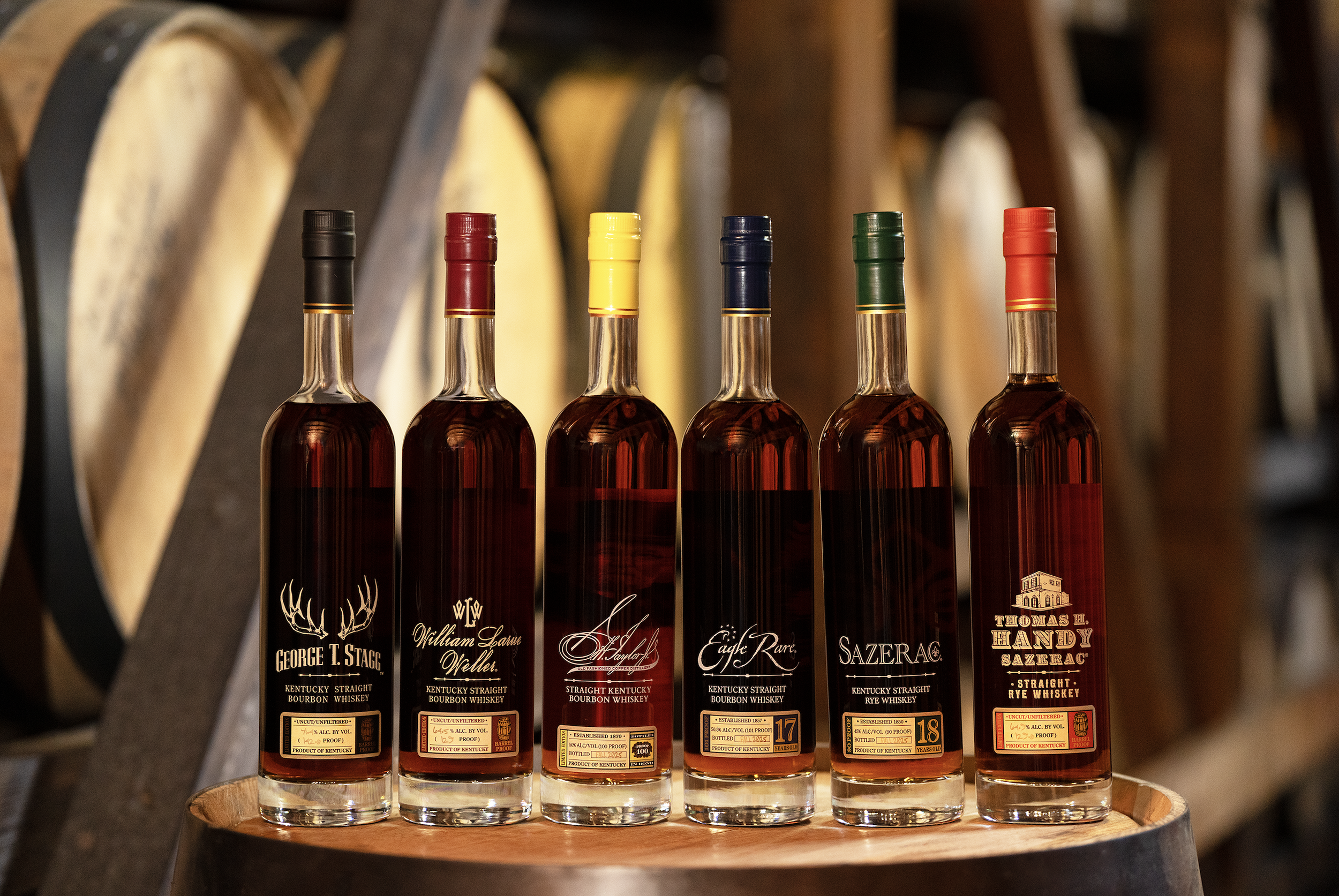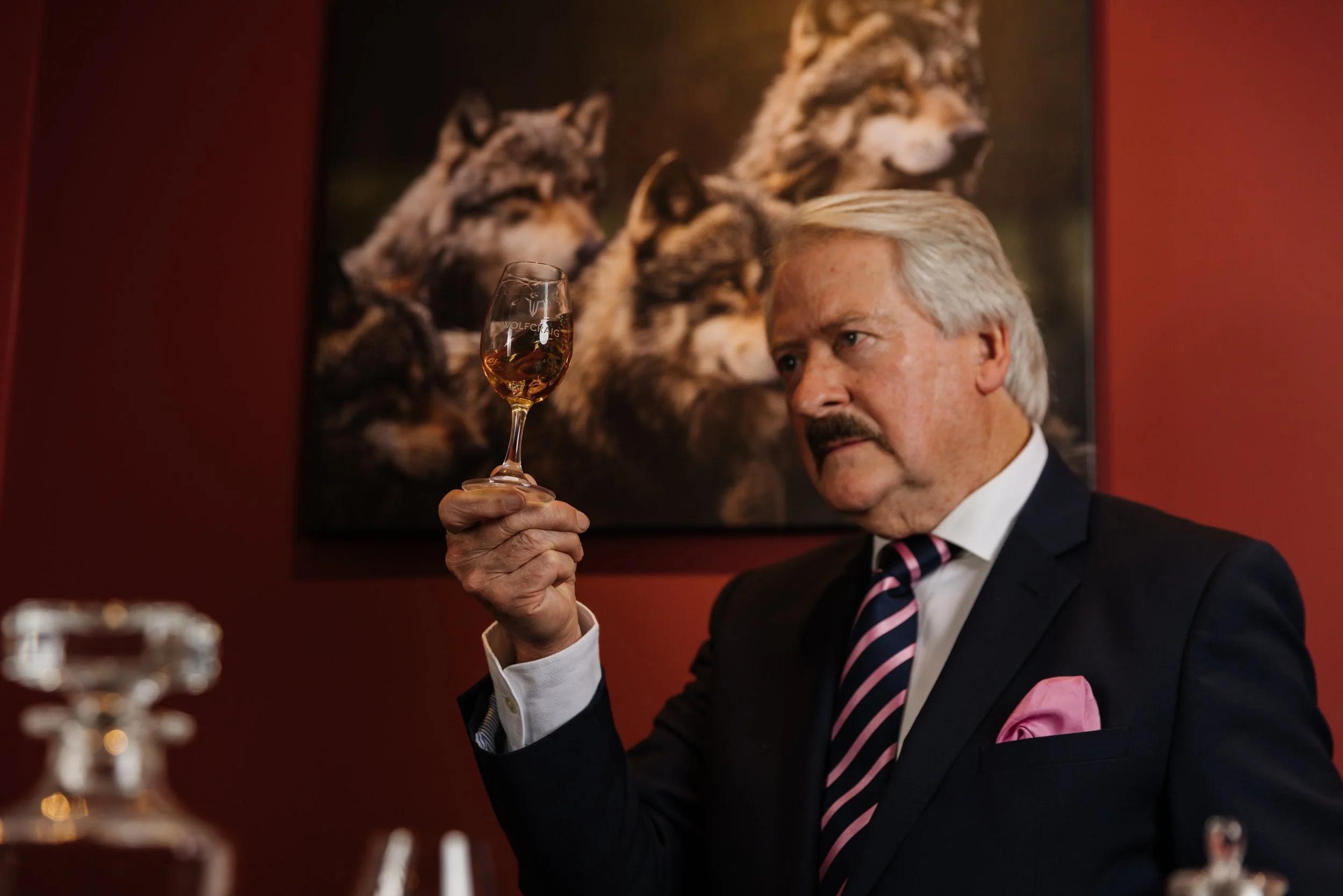Neon wonderland: Tokyo’s hidden whisky bars
Photograph: Simon Launay/Unsplash
It famously has nearly as many whisky bars as it does residents, so how do you find the best ones? Local resident Stefan Van Eycken has the answers, and invites you to join him for an unforgettable night out among Tokyo’s neon alleys and candlelit basements…
I once met a man who tried to conquer the whisky bars of Tokyo. In his younger years, after relocating from Kyushu to Tokyo and entering the workforce, this person set himself the challenge of visiting at least one new whisky bar every single day of the year. He figured it was as good a way as any to get to know the lay of the land. After three years of diligently carrying out his plan, he had to throw in the towel. He hadn’t progressed very far from where he had started three years earlier and he realized continuing would bankrupt or kill him, whichever came first. He packed his bags (by then, weighed down considerably with whisky bottles purchased along the way) and, in the spirit of “if you can’t beat them, join them”, set up a small bar in the city of Fukuoka which he runs to this day.
According to whisky writer and Barley contributor Dave Broom, “The best whisky bars in the world are to be found in Japan.” And it’s not just in terms of quality that the Japanese scene excels. There are literally thousands of specialist whisky bars all over the country, not just in the big cities but also in the middle of nowhere, where you would least expect to find one. In particularly busy places like the Ginza district of Tokyo, you can go bar-hopping without ever leaving the building: you just take the elevator and move on to the next bar. Even after a lifetime of visiting two or three bars a night, one would still only have seen the tip of the iceberg, as my hapless flaneur found.
Hit the subway to sample the best Tokyo bars. Photograph: Liam Burnett-Blue/ Unsplash
The abundance of specialist whisky bars in Japan is partly explained by the fact that the vast majority operate on a very small scale – literally. Most are tiny (seating between nine and twelve people) and in most cases, the person behind the stick is the owner of the place. There may be one other member of staff there, usually in a sort of apprentice role, and the typical pattern is that the assistant will eventually end up opening their own whisky bar a few years down the line.
‘In particularly busy places like the Ginza district of Tokyo, you can go bar-hopping without ever leaving the building: you just take the elevator and move on to the next bar’
The overheads at most of these bars is low, which makes it possible for prices to be kept down too. You would be hard-pressed to find a metropolis in any other part of the world where your average bar tab would be as modest as in Tokyo, or any other city in Japan, for that matter.
A bar seat at C-Shell
One potential obstacle to your bar crawl is the language barrier. A facility with languages is not one of the national fortes. Like most people in Japan, bartenders tend to have limited English-language competence. Some will try to bridge the gap; others may greet you and immediately say they are hopeless at English (they’ll be saying this in Japanese, of course). My experience is that, given some sensitivity from both parties, the liquid and the enjoyment thereof will help in building a bridge. That said, there are a handful of places where the ‘master’ – as the owner/bartender is usually referred to by patrons – is fluent in English. Luckily, as I’m going to be your guide for this virtual tour, you’ll be able to fully enjoy the experience without having to fiddle about with Google translate.
‘The service charge is standard practice, so you’re not being had. Standard pours in Japan are 30ml. If you’re interested in trying a wide variety of whiskies at any given place, ask for half shots’
Before we head out into the night and brave the first rush hour (5-6pm), there are a few things you need to know. Most bars in Japan add a ‘service charge.’ This is usually between ¥500 and ¥1,000 per person (roughly £3-6), depending on the bar. At some places, you get little sandwiches and/ or snacks for that; at others, just water and nuts. The service charge is standard practice, so you’re not being had. Standard pours in Japan are 30ml. If you’re interested in trying a wide variety of whiskies at any given place, ask for half shots. In most cases, you will pay exactly half of what a full shot costs. Bars are very happy to oblige.
In fact, with some very rare whiskies, the bar may ask you to be satisfied with a half shot. This is to make sure other thirsty customers coming after you also have a chance of trying it. At most bars, it’s futile to try and buy bottles, whether full, half-empty or empty. The bottles that people would be tempted to try and buy are invariably rare and worth a fortune. When there’s liquid in the bottle, the bar needs it because, well, that’s what draws people like us in. When it’s empty, the bar still won’t sell it. Prices for rare Japanese whiskies on the secondary market are astronomical these days, and bartenders are aware that an empty bottle given or sold to a customer could one day end up on an auction site, “refilled” and “resealed.”
Happily, that’s where the rules of engagement end and the fun starts. We’re ready to hit the town.
Tokyo is a sprawling metropolis and even the downtown area itself is quite vast. The train and subway network is how we’ll be getting around. In most cases, taking a taxi will multiply the time it takes to move between bars by a factor of two to three and the cost by a factor of ten. Most of the drinkers in Tokyo prefer to spend that money on, well, drinking, and taking a taxi home at the end of the evening is only a viable option for the small minority of affluent barflies who live in the city centre. What that does mean is we need to get an early start; our curfew is 11pm or half past at the latest, but that gives us ample time to enjoy the night.
C-Shell
What to drink: The house G&T followed by some Japanese craft whiskies.
1F Wind Arakicho, 9 Arakicho, Shinjuku, Tokyo (070-9122-3307)
Open Monday to Sunday, 18:00-24:00
Photograph: Yu Makiura
To make the most of our whisky window, we’re looking for some pre-dinner drinks with our name on them (I’m assuming you’ve had a good lunch). We’re kicking things off at 6pm in C-Shell, located in the back alleys of Arakicho, once a bustling geisha district, near Yotsuya. The name of the bar is a pun on the popular tongue-twister (it has a sign outside reading ‘She sells sea shells on the sea shore’), but there’s more unexpected delights at the counter, as owner-bartender Yu Makiura explains. “My place is a little different from other Japanese bars, in that we don’t have a menu”, he tells me. “Conversation replaces that. In addition, the C refers to the many good things starting with that letter that are central to our bar: cocktails, cigars and creativity. We’re trying to create our own style, between classic and casual, which both start with C as well – and that’s what’s inside our ‘shell’.”
‘We’re kicking things off at 6pm in C-Shell, located in the back alleys of Arakicho, once a bustling geisha district, near Yotsuya. The name of the bar is a pun on the popular tongue-twister, and there are more unexpected delights at the counter’
Yu is an engaging host and his dry wit will be on full display from the moment you pull up a stool at his bar. If you’re looking to do some ruminative sipping, this might not be the place for you. But you’ll be missing out. At C-Shell the conversation is on par with the quality of the drinks.
Yu spent seven years living in New York City as a child and moved back to Japan with his family when he was ten. “I started bartending after graduating from high school and cut my teeth at a bar called St. Elmo’s Bar in Roppongi, which no longer exists. After that, I hopped around many bars and restaurants, including Wolfgang Puck Bar & Grill in Roppongi Hills and Joel Robuchon in Ebisu. In March 2009, I decided it was time I opened my own bar.”
The sofa seats at C-Shell. Photograph: Yu Makiura
C-Shell is on the ground floor of a building in the patchwork of bars and restaurants that is Arakicho. It has nine counter seats and a small table for four with two bright-red sofas on either side. Soft jazz tinkles pleasantly in the background. There’s a wide selection of whiskies – Japanese and other – as well as a display case filled with figures of Japan’s mythical monster Godzilla. Yu is a big fan, and will happily chat to customers about his collection, but it's the sheer variety of spirits here he’s most proud of.
‘It has nine counter seats and a small table for four with two bright-red sofas on either side. Soft jazz tinkles pleasantly in the background’
“We have many other types of liquor available by the glass and offer seasonal fresh fruit cocktails, too. Our G&T is a must-try, even if I say so myself.” Yu is also keen to convey the charms of his neighbourhood. “Arakicho is a traditional part of Tokyo that is not on many visitors' radars … yet. There are over 300 restaurants and bars in a very compact area, and it has a peaceful and magical atmosphere unlike any other part of Tokyo.” But the clock is ticking, it’s time to drink up and say goodbye to Yu (feel free to grab a quick bite to eat in one of the many fine nearby eateries).
Bar GOSSE
What to drink: the recent Whisky Exchange arrivals.
Meguro 2-10-15, Maison Takahashi 102, Meguro, Tokyo (03-3779-9779)
Open Monday to Saturday, 19:00-23:30
For our next pit stop, we’re heading to Tokyo’s Meguro ward. A brisk ten-minute walk from Meguro station (on the loop line around Tokyo that is the Yamanote line) you’ll find Bar Gosse. The bar is on a busy street and, because the store front is so tiny, it’s easy to miss. (Look for the red interior!) Our host here is Satoshi Yui, a stout 57-year old with a disarmingly wicked sense of humour, who owns and runs the bar together with his brother Atsushi. “My family moved to the UK when I was thirteen and my brother and I went to school there. I came back to Tokyo after graduating from King’s College in London, and started working as a fixed income trader. My brother ended up working in the test administration industry in Tokyo.”
‘Bar Gosse was a so-called ‘girls bar’ – to be understood in the perfectly innocent Japanese sense of the term - a place where female bartenders make drinks and engage customers in light conversation’
How the two brothers came to run a bar, whilst still working their day jobs, is pure serendipity. “Until April 2016, Bar Gosse was a so-called ‘girls bar’ – to be understood in the perfectly innocent Japanese sense of the term - a place where female bartenders make drinks and engage customers in light conversation. The owner of the bar at the time happened to be a friend of my brother’s and told him she was looking to close the bar. My brother knew that I had been collecting whisky for a while and suggested we co-run the bar. We kept the original name – ‘gosse’ having the connotation of ‘naughty boy’ in French – but turned it into a specialist whisky bar.”
Photograph: Erik Eastman/ Unsplash
The attraction of Bar Gosse is three-fold: a laid-back atmosphere, a genuinely jaw-dropping selection of stellar bottles (many of which you would have a hard time finding at other bars in Japan, and that’s saying something) and extremely reasonable prices. “Before I opened the bar, I visited many specialist whisky bars to see how they were run, and often, when the time came to pay, I was somewhat disappointed. When you have a good time drinking great drams, you don’t want all that happiness to be crushed by feeling overcharged.” The brothers were determined to make sure that paying the bill would only add to the joy of the experience and as a frequent visitor I can attest to the fact that they’re walking the talk. Drinking here feels a bit like winning the lottery.
‘People who make the effort to visit our place, will always find a plethora of bottles they won’t have seen at other bars. Forcing yourself to leave will be your biggest problem here’
“With so many other specialist whisky bars around, I felt we needed to differentiate ourselves and one way of doing so is by offering a selection of bottles by the glass that are not so easily found at other bars in Japan. I buy many whisky bottles abroad – from the UK, Germany, the Netherlands, Italy, and so on – so people who make the effort to visit our place, will always find a plethora of bottles they won’t have seen at other bars.” Forcing yourself to leave will be your biggest problem here.
Jumping back on the metro, we take the Yamanote line clockwise from Meguro station to Ikebukuro station in northern Tokyo, the second largest stop in the metropolis (serving close to 3 million passengers daily). The station is a bit of a labyrinth to navigate, but one of the many wonderful things about our last bar of the night is that you can follow the underground walkways to exit C3 and the bar is right across the street from the exit.
Aloha Whisky Bar
What to drink: a fruited smoothie sour ale from Uchu Brewing followed by some Chichibu whiskies.
Izumi Building 3F-B, 3-29-11 Nishi-Ikebukuro, Tokyo (03-3779-9779)
Open Monday to Sunday, 18:00-23:30
David Tsujimoto at Aloha Whisky. ‘Photograph: Mac Salman, Kanpai Planet
Aloha Whisky Bar is a more recent addition to the Japanese bar scene – it opened in September 2019 – but it quickly rose to prominence, and landed two awards within less than half a year of its opening. Shortly after that, the pandemic hit and ‘normal life’ was extinguished and the bar shuttered.
David Tsujimoto is not your average local owner/bartender. “I'm biologically 100% Japanese but was born and raised in Hawaii to 2nd and 3rd generation Japanese-American parents”, he beams. “We all look Japanese but we can't speak Japanese. As you can imagine, this causes a lot of confusion, but in a positive ice-breaking kind of way!”
‘It wasn't until 2007 that I tried my first single malt. It was a Laphroaig, and I was in love. I was mystified by how smoke and the sea were infused into this liquid’
Tsujimoto got into whisky in junior high school when his father introduced him to Johnnie Walker Black Label. “He would order it every time we went out to dinner and I'd always get the first sip. As I got a little older, these sips became bigger and bigger until I started bringing bottles of it to my high school parties. At one party, my friend accidentally drank all my Black and replaced it at the next party with a Johnnie Walker Red. One night with Red ruined my relationship with whisky till I turned 21. It wasn't until 2007 that I tried my first single malt. It was a Laphroaig, and I was in love. I was mystified by how smoke and the sea were infused into this liquid. Although I loved whisky, I never bought one of my own till 2017.”
Tsujimoto was teaching English in the Tokyo metropolitan area when a childhood friend – the same person who drank all his Black – called him, asking to source some Hibiki 17 for him. “For the next two weeks, I searched but couldn't find one. So, he said to get a Hakushu 12 instead. But the same thing happened. I was about to give up when I saw one on the shelf. This moment was beyond euphoric. I bought it, lied to my friend that I didn't, took it home and drank it. The taste was another moment of euphoria and here I am, 1,000+ bottles later, bartending in Tokyo.”
Despite his roots, you won’t find garish Mai Tai's, floor splashed with sand or tiki torches at Aloha Whisky Bar. If there is a Hawaiian theme, it runs much deeper than that. “The main element I bring with me from Hawaii is the Aloha spirit. This means welcoming all with a warm smile and an open heart. It's the essence of sunny days and white sandy beaches. But what I learned from my whisky upbringing at J's Bar and Bar 11, both in Ikebukuro, is that this spirit needs to be harnessed. It's not about pushing an agenda, image or theme. It's about being what each visitor needs you to be while maintaining the harmony of the room.”
‘There is only room for counter seats, but what the bar lacks in spaciousness, it more than makes up for in terms of liquid treasures’
What’s not to love about Aloha Whisky Bar? Certainly, the selection would satisfy even the most demanding whisky-geek. There is a very healthy selection of Japanese expressions including a whole wall dedicated to fabled Chichibu distillery, the shining light of the Japanese whisky scene but well-nigh impossible to get hold of in the wild. Fear not: here you have dozens of bottlings available by the glass. When it comes to Scotch, Ben Nevis and the Springbank family are well represented on the shelves. There is also a dedicated berth for old and new Bourbon. And thanks to a steady stream of kindly visitors and friends bearing gifts from across the globe, there are many international releases not available on the Japanese market.
The bar seats just nine people and is extremely popular, so it’s best to call before heading over. There is only room for counter seats, but what the bar lacks in spaciousness, it more than makes up for in terms of liquid treasures. I recommend taking your time and let David guide you through a few of his most delectable selections.
Alas, the Tokyo night has caught up with us. It’s 11.30pm and David has to close the bar so he can catch the last train home. I’m in the same boat, so this is where we have to say our goodbyes. Not to worry though, if you still have gas left in the tank, the staff at Aloha Whisky Bar will gladly point you in the direction of other great places near and far. And this applies to most bars in Tokyo. Just beware if you have a propensity for falling down rabbit holes. It might turn out to be a never-ending journey.
Photograph: Yoav Aziz/Unsplash
Stefan Van Eycken has been covering the Japanese whisky scene for over a decade from his base in Tokyo. The updated second edition of his book Whisky Rising: The Definitive Guide to the Finest Japanese Whiskies and Distillers is out on July 4.
Sample a taste of Japan without leaving Scotland…your video guide to the fabled Chichibu distillery
Landlord of the Highlander Inn, Craigellachie, Tatsuya Minagawa, with some of his Japanese whisky collection




